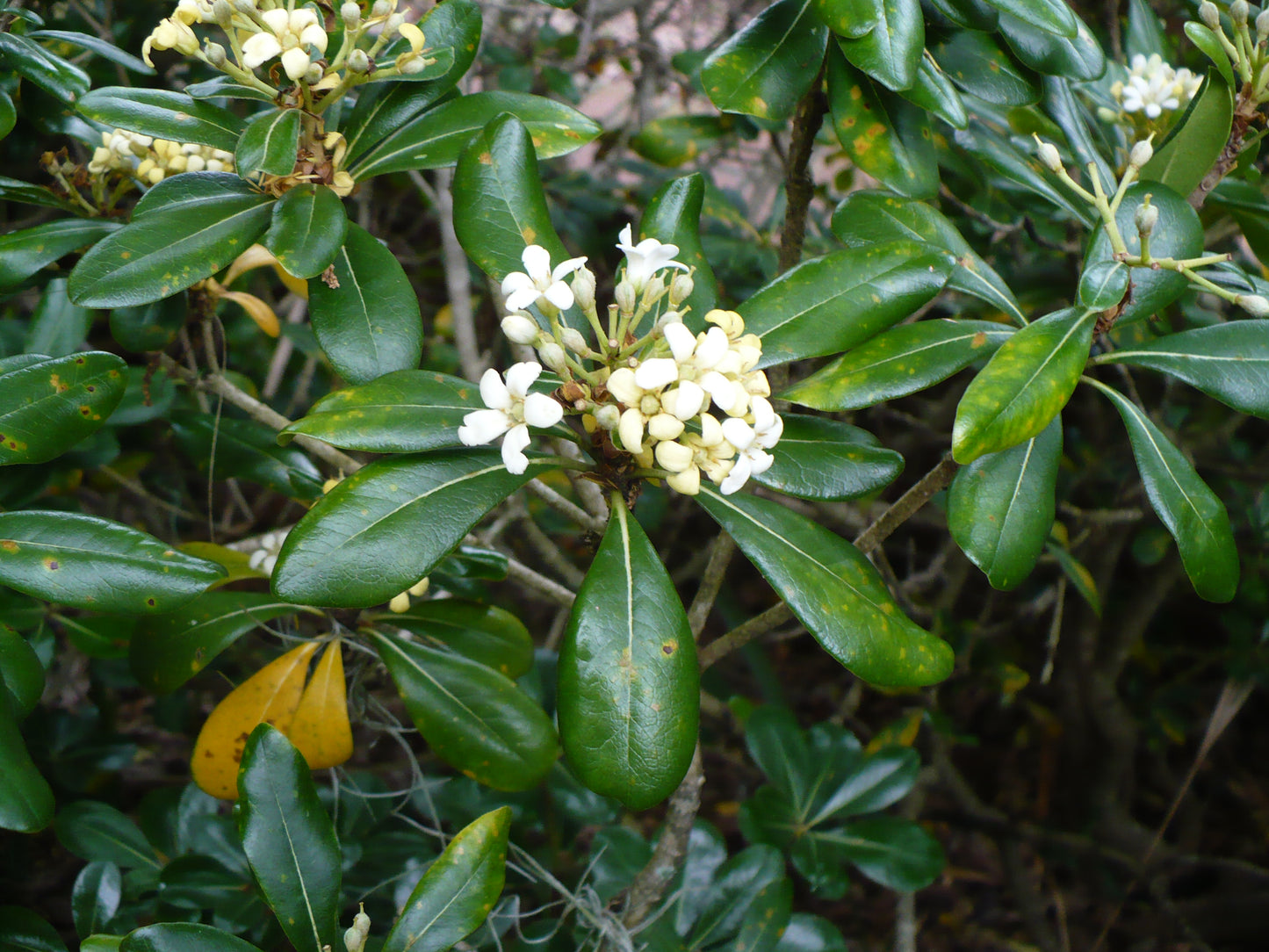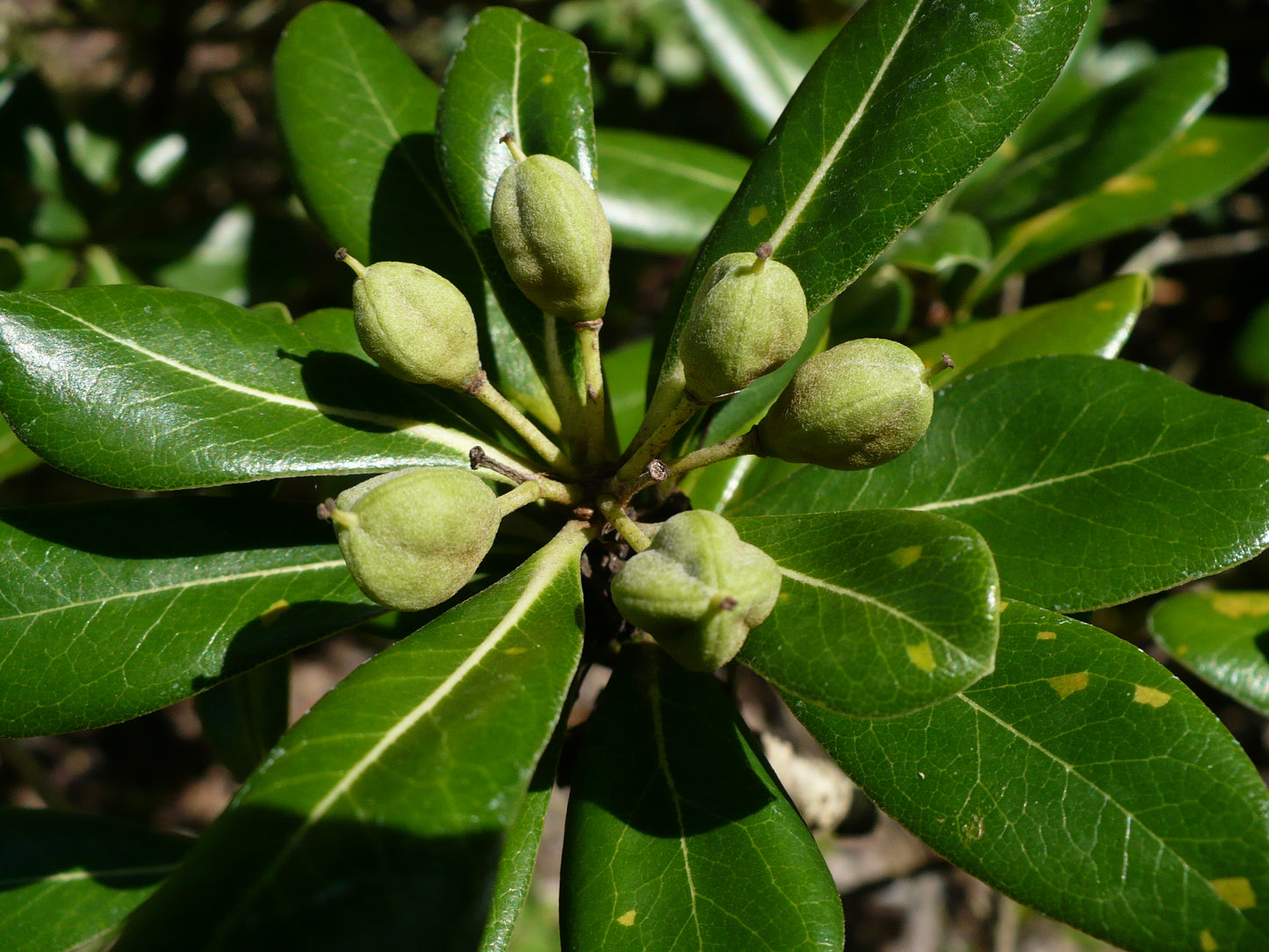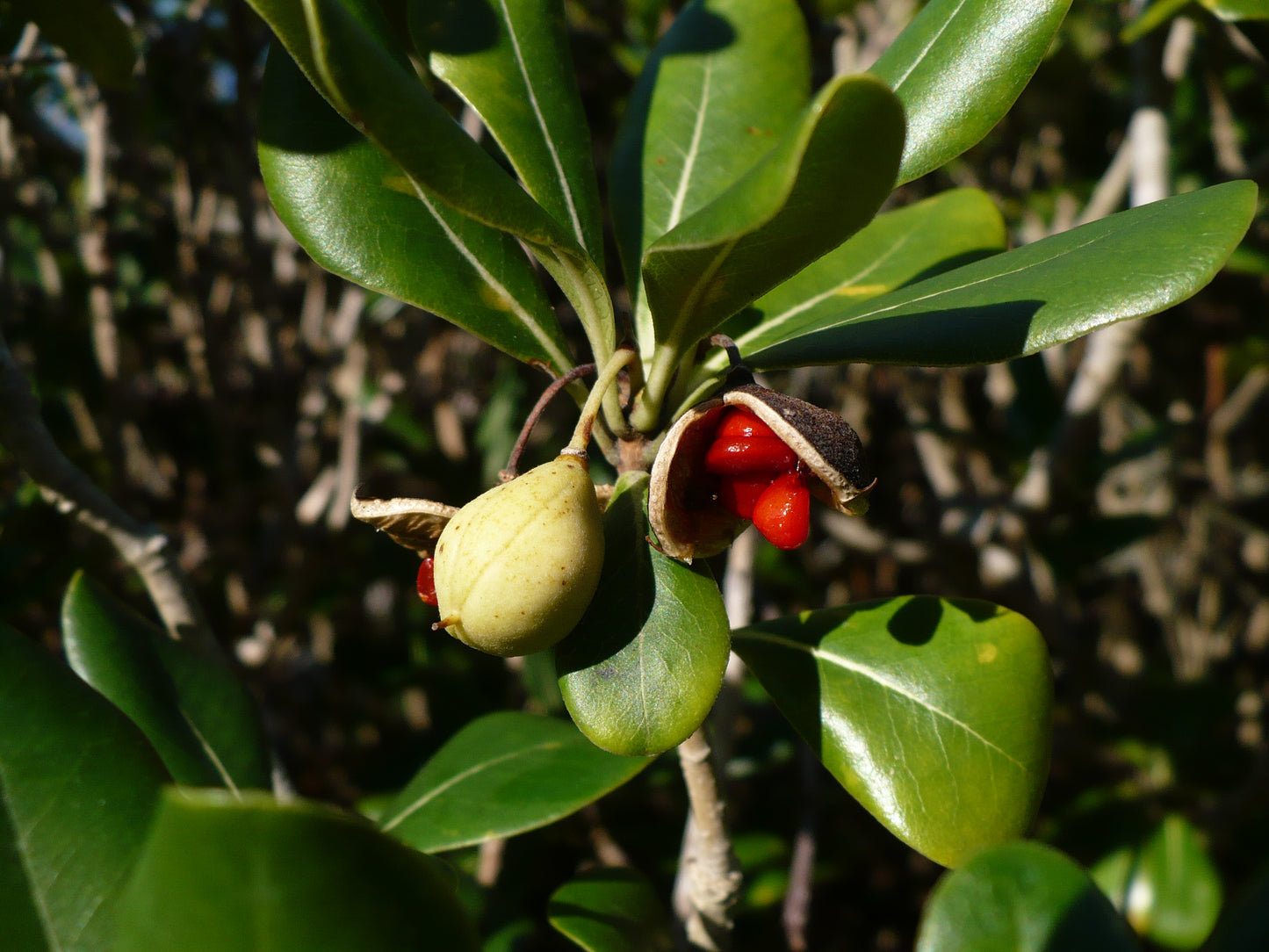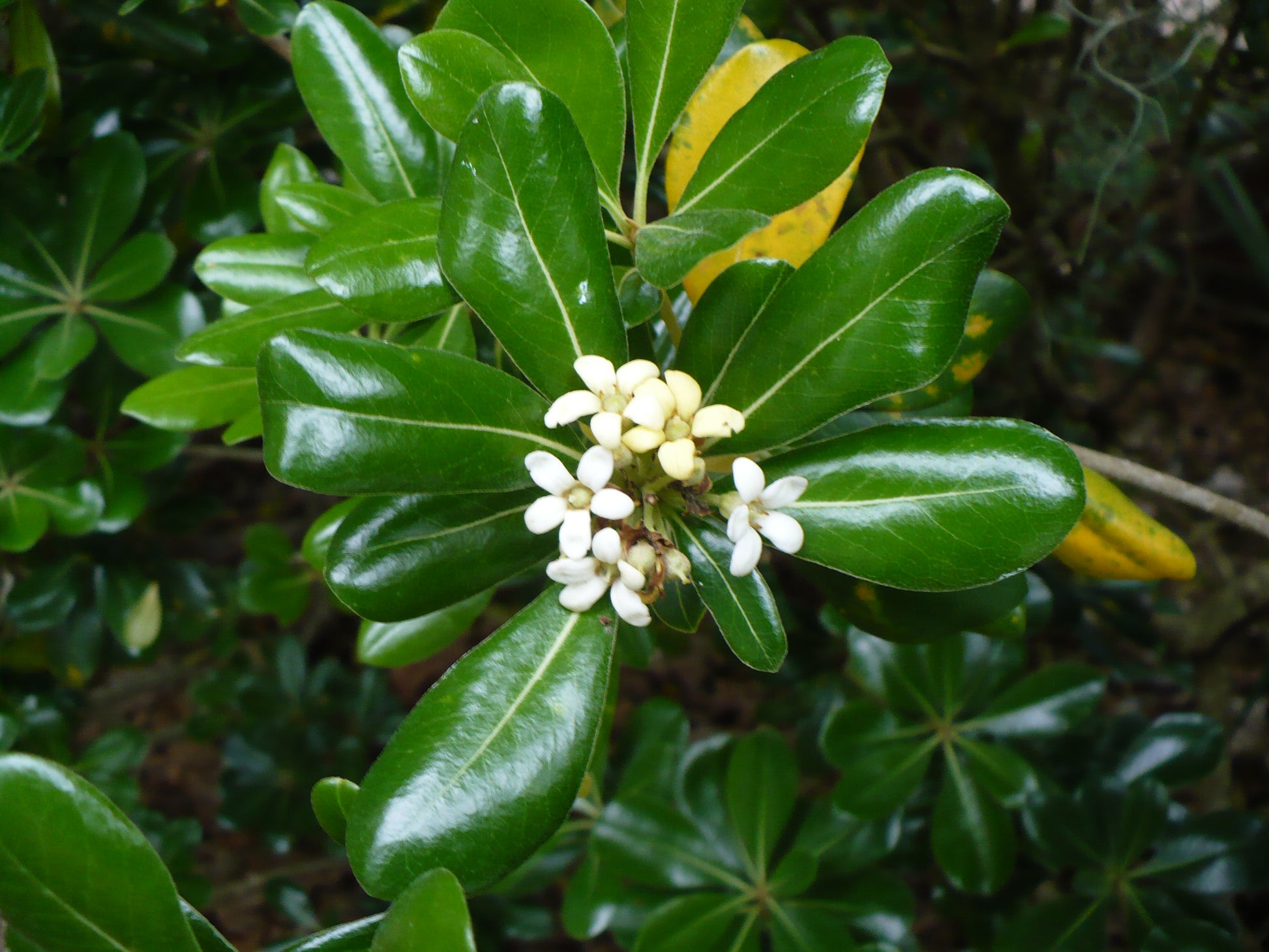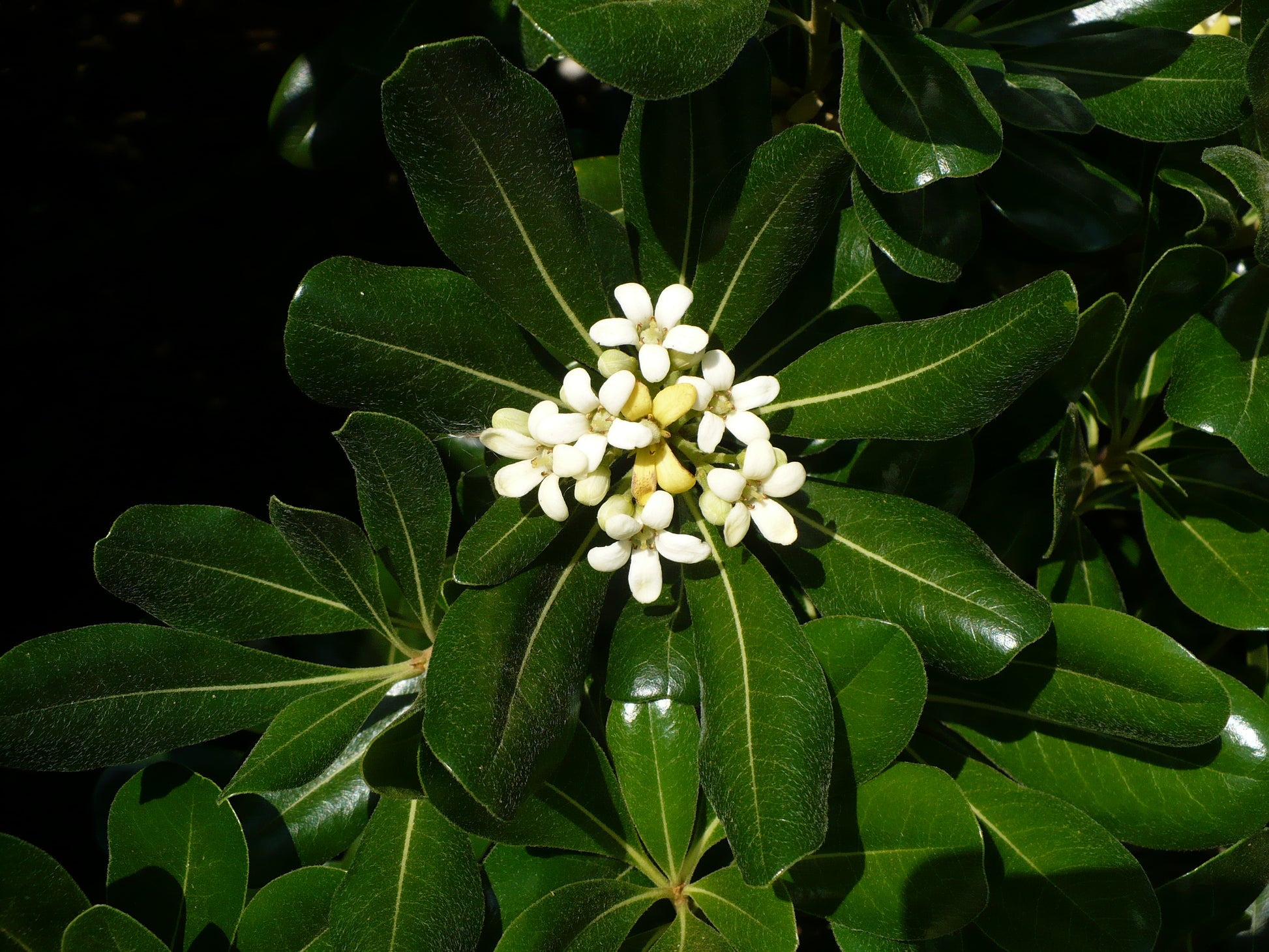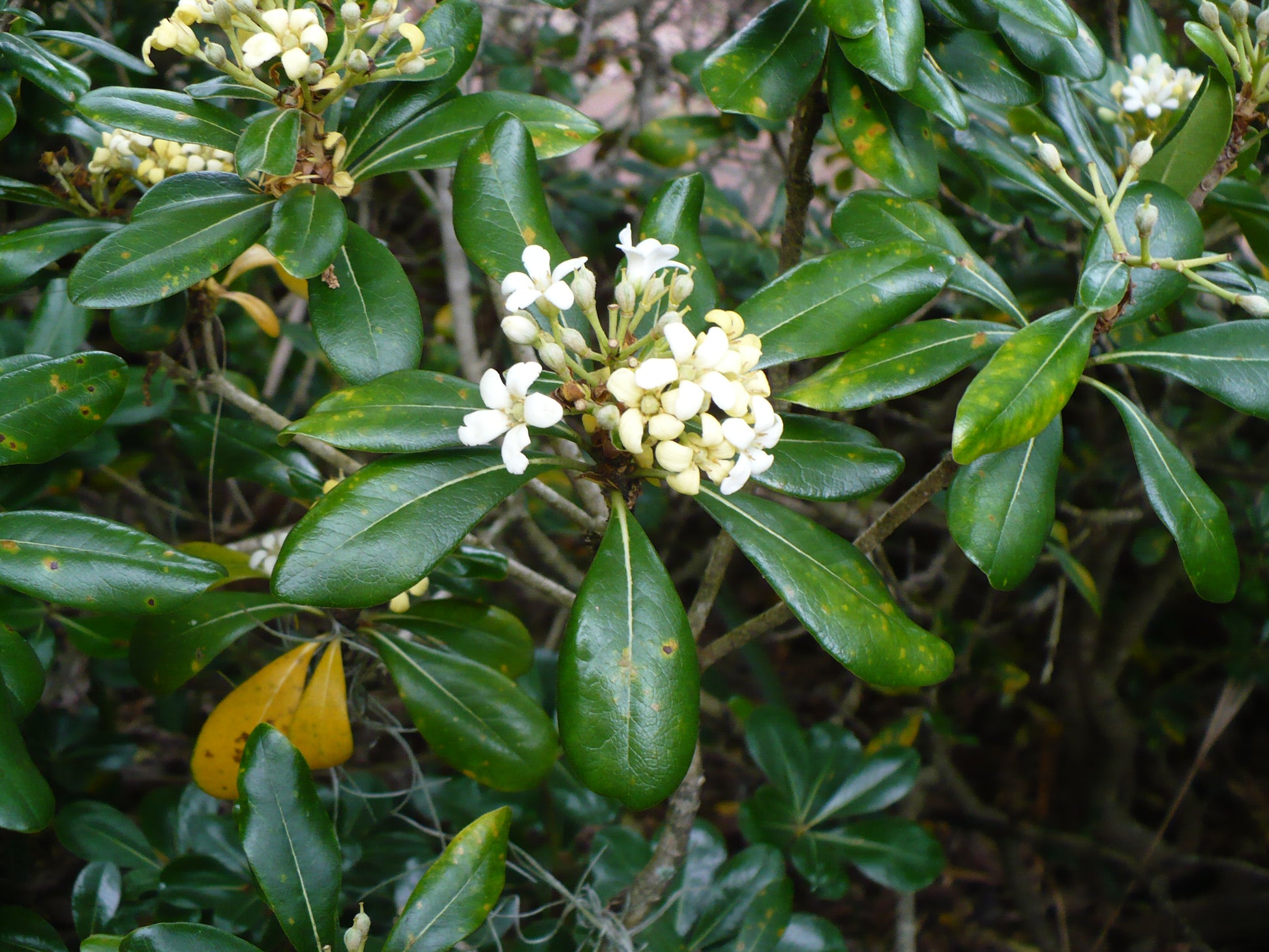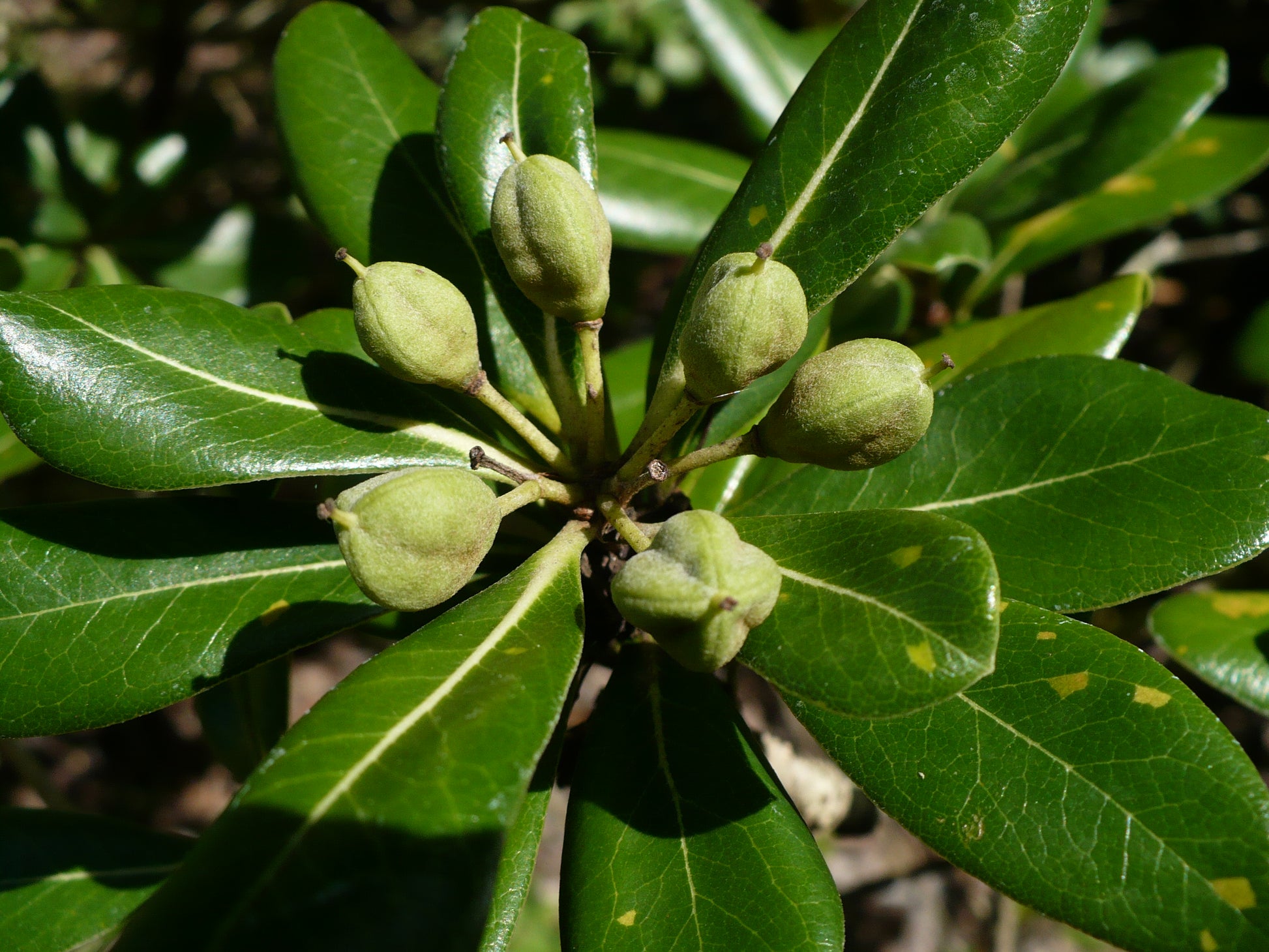Floridaseeds
Japanese Mock Orange Pittosporum tobira 20 Seeds USA Company
Japanese Mock Orange Pittosporum tobira 20 Seeds USA Company
Couldn't load pickup availability
Pittosporum tobira, commonly known as Japanese mock orange or Japanese cheesewood, is an evergreen shrub or small tree native to Japan, China, and Korea. It's a popular ornamental plant in many parts of the world due to its attractive appearance, fragrant flowers, and versatility in landscaping. Here are some key characteristics and information about Pittosporum tobira:
Appearance: Japanese pittosporum is a dense and bushy evergreen plant that can grow to a height of 6 to 15 feet (1.8 to 4.6 meters). It has glossy, leathery, dark green leaves that are oval to lance-shaped, and they are typically arranged alternately on the branches. The leaves give off a strong, pleasant fragrance when crushed.
Flowers: The fragrant flowers of Pittosporum tobira are a notable feature. They are small, creamy white, and star-shaped with a sweet, orange-blossom-like scent. The flowers are typically borne in clusters at the branch tips. Flowering can occur throughout the year, with the peak often in spring and early summer.
Fruit: After flowering, Japanese pittosporum produces small, woody seed capsules. These capsules contain seeds and can split open to release them when they mature.
Growth and Cultivation: Japanese pittosporum is relatively easy to grow and maintain. It prefers well-drained soil and can tolerate a range of soil types, including sandy or loamy soils. It is also salt-tolerant, making it suitable for coastal landscapes. The plant thrives in full sun to partial shade, although it may benefit from some protection from intense afternoon sun in hot climates.
Pruning: Pruning can help maintain a more compact and tidy shape. It's best to prune Pittosporum tobira after the main flowering period to encourage new growth and maintain its desired size and shape.
Landscaping: Japanese pittosporum is a versatile plant often used in landscaping. It works well as a hedge, screen, or specimen plant. Its fragrant flowers make it a good choice for gardens and near patios where the scent can be enjoyed.
Disease Resistance: This plant is generally resistant to many common pests and diseases, making it a low-maintenance choice for gardeners.
Hardiness: The hardiness of Pittosporum tobira depends on the specific variety, but it is generally suited to USDA hardiness zones 8 to 11, which means it can tolerate mild frost but may require protection or be grown as an indoor plant in colder climates.
Overall, Pittosporum tobira is appreciated for its ornamental value, fragrance, and adaptability to a variety of garden and landscape settings. It's a popular choice for those looking to add a touch of greenery and fragrance to their outdoor spaces.
Growing Instructions
Seed Preparation: Some gardeners recommend scarifying the seeds before planting to break their hard seed coat. You can do this by gently rubbing the seeds with sandpaper or nicking them with a knife. This can help improve germination rates.
Growing Medium: Use a well-draining potting mix that is suitable for starting seeds. You can also add some perlite to improve drainage.
Containers: Choose small seedling pots or trays with good drainage holes. Sterilize the containers before use to reduce the risk of disease.
Warm, Humid Environment: Pittosporum tobira seeds require a warm and humid environment for germination. You can use a seed tray cover or plastic wrap to create a mini-greenhouse effect.
Steps to Grow Pittosporum Tobira from Seeds:
Planting: Fill your seedling pots or trays with the prepared potting mix. Plant the prepared seeds in the soil, burying them about 1/4 to 1/2 inch deep. Space the seeds a few inches apart.
Watering: Keep the soil consistently moist but not waterlogged. You can water from below by placing the seed tray in a larger tray with water, allowing the soil to soak up moisture. This helps maintain humidity.
Covering: Place a clear plastic lid or plastic wrap over the pots or trays to create a mini-greenhouse effect. This will help maintain high humidity around the seeds, which is essential for germination.
Temperature: Maintain a warm and stable temperature for germination, ideally around 70-75°F (21-24°C). You can use a propagation heat mat to ensure the right temperature.
Germination: Germination may take several weeks to a few months. Once you see seedlings emerging, gradually remove the cover to acclimate them to lower humidity.
Transplanting: When the seedlings have grown large enough and have developed a few sets of true leaves, they can be transplanted into larger pots or directly into the garden if the climate is suitable.
Growing Conditions: Provide your Pittosporum tobira seedlings with bright, indirect sunlight as they continue to grow. As they mature, they can handle more sunlight.
Materials
Materials
Shipping & Returns
Shipping & Returns
Dimensions
Dimensions
Care Instructions
Care Instructions
Share



